How do you find your niche? In this article, I walk you through the reasons why you should find your niche as a crochet designer, as well as a whole list of questions that will guide you in finding the niche of your crochet business.
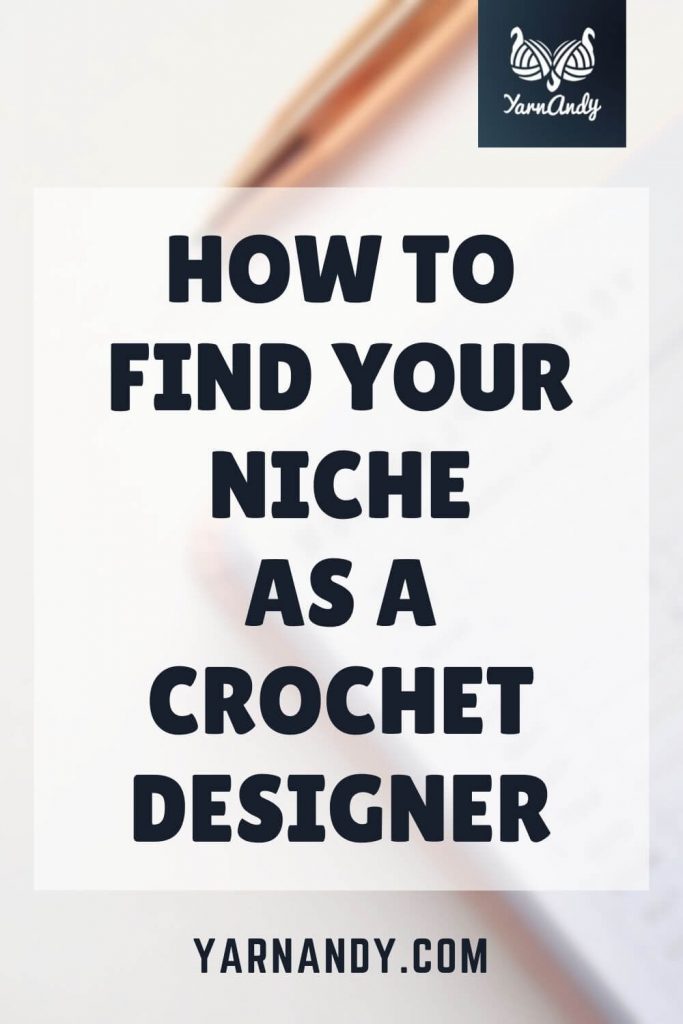
What is a niche in general?
The origin of the word “niche” is complicated, but I’m pretty sure of its French roots, as it exists in my own language (nișă) also from French origin, with the same meanings as in English.
It means multiple things, such as a depression in a wall, where ornamental objects are placed.
In ecology it means a part of the environment that requires specific adaptations for all beings to survive and thrive in. An ecological niche is created by all factors, biological, chemical, physical, that interact and together provide a specific environment for an organism to live in. An organism that adapts to these factors is said to live in this ecological niche.
In marketing, the term has been adopted to mean a portion of the market that a product or brand targets specifically. The more detailed the characteristics of the slice of the market, the more “niche” the product or brand is and the more loyalty the product or brand can accumulate.
As a crochet designer, you want to use the last definition, but what if we explore the others a bit more? You do make patterns for decorative and practical objects and you don’t work in a vacuum. Your creations are influenced by the environment, by the people who you interact with, by your culture, by your training and access to further education, by the physical resources that are available to you.
So you will choose a niche for your crochet business based on who you want to serve (specific slice of the wide market of makers who buy patterns or use free patterns), but also based on what is realistically accessible to you in terms of resources:
- financial – the funds available to you for investing into this business;
- physical – materials and tools;
- social – your social circle, online and offline crafting communities;
- technological – what technologies are available to you and what skills you have/can learn for making the most of them;
- and, most importantly, time – the time you have available for developing your patterns, trying out new ideas, researching techniques, writing up and testing patterns.
It all really adds up to a specific mix of conditions for each person going into a crochet design business and I think that’s amazing, as we are all able to bring in different strengths and complement each other.
What is a niche in the world of crochet patterns?
Now that we know what a niche is and what it’s made up of, what are some concrete examples of a crochet designer niche?
Because the list above is quite extensive and can give us a multitude of options, I’ll make up a few examples so we see how it works.
First fictitious example of a crochet designer and their niche
Let’s say you are a university student with a little bit of time on their hands after finishing the coursework every day. You like to make small things that don’t take up a lot of dorm space and don’t require a lot of yarn, but are nice to keep around and play with while you listen to lectures or give as gifts to friends.
You have no crafty friends on campus, as everyone is busy going out and partying, but have good command of computers and software, like to spend your free time in online communities (let’s call them forums, even though we know forums are no longer a thing…) and prefer following along with videos, as opposed to reading patterns.
You want to start designing crochet patterns to help you through your remaining years in uni and until you find a job you love. What would be your niche?
I’d say amigurumi designer with a focus on video patterns.
Let’s try another example
You’re a stay at home mom with three little kids. You loved making tiny booties and baby items for your kids as they were preparing for the world, have a big stash of baby yarn in your house and know several other mommies or mommies to be from the local community.
They love your handmade items and would like to have some for themselves. You also have a relationship with your local yarn store, as you’re an outgoing person and easily make friends (not like me…).
You have no specific interest in technology, but have access to a tablet or laptop computer.
You want to start designing crochet patterns to sell to supplement the household income and cover some costs. What’s your niche?
I’d say patterns for baby items, presented in written format, plus crochet workshops in the yarn shop, where you can meet local potential clients who can help you spread the word.
What doesn’t count as a niche
You might think that publishing 15 versions of the same round yoke sweater pattern with a different colorwork chart for the yoke will put you in the “round yoke colorwork sweater designer” niche, but that’s not how a niche works.
Yes, I am talking about all the knitwear designers who have 40 patterns in their portfolio, 35 of which are the same sweater, just with a different color chart (it’s not even a full chart, just a sliver that you must repeat and can’t change for larger sizes, so you end up with enormous necklines for people with average head sizes).
That’s not a niche, that’s a marketing gimmick and some people are “obsessed” with those patterns and will buy every single one for some reason (I don’t understand why, but I’m also autistic and apparently other people are starting to realize that some of us are a bit more rational than others, but who am I to judge?).
When you take away the veneer of Instagram filters and flatlays, at the end of the day you end up with ill-fitting garments (even in the sample size and on the sample model!) that will be forgotten in a closet and probably thrown away after the Instagram photoshoot (best case they end up in a thrift store where people buy them and then regret).
If that’s what you want, go ahead and do that, I won’t stop you. You might even call that a niche, if you insist, but lying to your potential customers is not one of the values I’d add in my search for a niche.
When do you need to find a niche for your crochet business?
If you just design crochet patterns for fun and don’t expect to get any money from this work, you don’t need to choose a niche. You can just try things out, have fun, enjoy the randomness of making up things that you want to put out into the world with no expectations.
You probably don’t need the income, so you also don’t need to trouble yourself with marketing and other business essentials.
Or you might already know what your niche is and are on the way towards creating a cohesive portfolio of patterns that showcase your strengths and bring in your ideal customers. In that case, why are you still reading this?
But if you are as confused as I was when I started, but your plan is to become financially independent by designing crochet patterns, then you do need to find your niche.
It might not happen consciously for you in the first few months or even years, while you learn the ropes of what it means to publish crochet patterns (it is quite a learning curve, especially if you were not friendly with technology in the beginning), but it does need to happen eventually, when you’re ready to grow your crochet business.
You can also start your business with a niche in mind, but it might shift over time based on what you learn, what events and materials are accessible to you, what people you meet.
It’s all good. Nothing is static in this world, everything changes, so will your niche, but it doesn’t mean that you don’t need one.
Advantages of knowing your niche
Now let’s explore some of the advantages you get from having identified or chosen your niche and developing your business with it in mind, as opposed to doing random stuff with no specific plan in mind.
These are in no particular order, so don’t take them as “the first is the most important”, all of them are important.
1. You’ll show people who’s the boss
Well, not an actual boss (unless you call yourself your own boss, in which case, more power to you). I mean that you will show off your expertise in a specific field and gain authority through that expertise.
Spending a lot of time developing a specific set of skills will make you an expert and will make you the person to go to for a specialty item or technique.
Many of the designers that I’ve found, who’ve been designing for decades, have a specific direction in which they’ve moved over the years. Now they are the experts and people search their materials (be they patterns, books, videos, what have you) in order to learn those specific skills.
You want to be one of these people.
And yes, it does take years, even decades, to get there, so that’s why you need to start now with a specific direction in mind.
2. You will easily identify and reach your ideal customer
You don’t have to scramble around, trying to reach people from all over the world, doing all the things.
You’ll have your message straightened out and ready to go.
You’ll know what to say because you only need to say so much, no more excuses and trying to sound cheerful when you’re actually a goth, or trying to sound serious when all you want to do is have some fun.
You will finally be able to just be yourself and share the joy of that thing you enjoy so so much with people who enjoy the same thing just as much as you do.
Will it happen instantly? Will you just find your voice instantly and be able to wield it around, gathering your new friends and paying customers who love you and want to support your endeavor?
No, sadly, that’s not really possible, but it will happen over time. Your voice is just like a muscle, the more you use it, the stronger it gets.
Yes, I know, I’ve dipped into the jar of clichés, but they are clichés for a reason.
I am still struggling with this one, I have no idea who I am and where my voice is, decades of masking will do that to you.
But you’re probably not an autistic who’s had to hide their personality throughout their life for safety’s sake, so you’ll be fine.
3. You will finally know what to work on and what to not work on
You’ll be able to resist buying that extremely pretty clown barf yarn that only looks good in the skein because you’ll know that it will never be a part of your designs.
Or you’ll know that black projects bring you no joy (but they do bring you migraines, yay). Or that you only want to make black projects. Both are valid for people with different niches.
You’ll be able to *finally* frog that 5 year-old sweater project that you’d never wear anyway because you actually want to design doilies.
Or give away some of your ever-growing collection of full-sized blankets because you’d rather design baby-sized ones.
The dread of the 20 WIPs will be gone (OK, now I’m only talking to my ADHD peeps, if you are a 1-WIP-wonder, what are you even doing reading my blog?).
4. You will know what to turn down and when to say “no, thank you”
You’ll know when an event is a good idea for your business and when to let it go. When a collaboration offer is great for your business, when it will bring in your target customers, or when it will flop, despite you giving it all.
You’ll be able to say “Thank you for the offer, but it doesn’t suit my business” and concentrate on the events and projects that do align with your goals.
You’ll have more time to develop the things you love and then to concentrate on marketing them, instead of trying to reach arbitrary deadlines dictated by others.
5. You will not burn out in your first few years of designing
I can’t stress how important this one is!
Designing crochet patterns is not easy work. I don’t care what other people say, it requires dedication, lots of different abilities and skills, creativity and self-confidence. Also, a large array of yarn and instruments. Yes, I call hooks instruments, but you also need at least a camera and a computer.
These are all finite resources (except creativity, that one can be boundless, but can disappear in burnout!). Without one of these, designing is really difficult.
So if you have all the requirements necessary to start and maintain crochet design as a business, call yourself lucky, but also give yourself a break once in a while.
Trying to *do all the things* all the time leads to burnout (also social media leads to a different kind of burnout, especially if you’re like me and think you need to put on an act, or else everyone will ignore you like they always do).
When you know your niche, you know what you should concentrate on. You know that you don’t need to cater to everyone, that you can take your time to create high quality patterns that show off your best abilities and your creativity, that you don’t need to run to catch up with every event coming your way.
You can give yourself grace and grow your portfolio sustainably. You can reach a balance between creativity and marketing, as they are both essential in a crochet design business.
You can even take a vacation once in a while… And obviously bring your crochet along because what designer are you if you don’t crochet on your vacation?
I know! Learn to knit or learn another fiber art that can be moved around and that doesn’t make you feel like you’re at work on vacation.
6. You will grow your pattern portfolio in a structured and comprehensive way
This allows people to understand what you are about, that helps people find your work and lets them know where to come back for more.
It will help you build a strong foundation from which to branch out later on and explore adjacent niches.
7. People will know what they will get from you when they see what you offer.
This ties in with one of the first things in this list.
You will become known for your style and your portfolio, for your signature patterns that will make the rounds and you’ll be able to capture the people who love your famous designs and provide them with more of the goodies they love.
Of course, this takes time and if some of your patterns become viral before you have a portfolio that you can direct those people to, you can still use the momentum to build your list of email subscribers (we’ll discuss email subscribers in another article).
8. You’ll get very loyal customers and supporters.
I left this last because I like it the most and it’s the trickiest too. These are people who love what you do and will come back to you over and over again for the specific thing that defines your niche.
These people are not many. They are your most important customers. They are precious and you need to take care of them.
They will appear out of nowhere and support you and buy all your patterns. You need to appreciate these people and let them know how much they mean to you.
They will take your patterns out into the world and make your brand known to others. They may bring in other precious loyal customers, but even if they don’t, they will be there for you through thick and thin.
Enjoy their company and make sure they are on your email list. Keep in contact with them, you never know when you might need some help that nobody else can give you.
How do you find your niche as a crochet designer?
Whew, that’s a lot to take in, yes, it’s awesome to have your niche, but how do you actually find it? What are the steps you need to take to find your niche as a crochet designer?
I don’t have a perfect roadmap. Every designer’s journey towards finding their niche is personal and reflects their life. Read here how I found my own niche (it’s not very straightforward, I’ll give you that).
But I do have some pointers with regards to what you need to look for in your current and previous work. Also in your life before you started designing crochet patterns.
About the questions
Use these questions as prompts and write the answers in your journal. Or use the workbook that I prepared (available soon from my shop).
All the answers, taken as a whole, will lead to your niche.
Don’t worry if you don’t have answers to all the questions right from the beginning, read through them and keep them in mind. Your brain will work on them even when you work on other things.
These questions assume that you already have started designing, but most assume only that you are a crocheter with some experience and a decent amount of completed projects.
I will not assume that you are a beginner crocheter who wants to start designing. If you are, maybe give yourself a couple of years, try things out, find your style and your preferences, then get back to designing.
Filling out the answers to these many questions will take time. Give yourself this time. Take a few days to answer them, read your answers, add things, erase things.
Present
- What is your active WIP? I mean both a crochet project, what you are making right now, and as a design, what pattern you are working on right now.
- What was your last completed project? When did you finish it? How about the one before?
- Did you start other projects before finishing another project?
- Did you make any patterns up before finishing older ones?
- How long do you feel like you spend on a pattern that you finish? In hours or days.
- How long do you feel like you spend on a pattern that you later on abandon?
- What’s the difference between these two kinds of projects?
- What kind of project brings you joy and fulfillment when you make it?
- What yarns do you have in your stash and what do you regularly buy?
- What kind of yarn gets you excited to work with and you use up and buy again and again and wish you had more of?
- Which yarn from your stash never gets used and is always ignored?
- Do you enjoy wearing your own projects or do you prefer making them as gifts? Do you prefer giving to adults or kids?
- Do you live in a warm or cold climate?
- Do you have winters? I mean real winters, not 10°C with rain, but the snowy and windy and frosty kind.
- Do you like working from instructions or charts when following a pattern? Do you prefer videos to both of these options?
- Are you detail-oriented or get bored easily by having to add details?
- Do you enjoy simple, repetitive motions, or do you prefer challenging stitches and stitch combinations?
- Do you like to go with the flow and feel things as they develop, or do you prefer planning out projects and ticking off boxes?
- Do you have the patience for finishing large projects, or do you need to cultivate it? I’m kidding now, you could also enjoy smaller projects or projects made up of small pieces.
Past
- Did you grow up in a crafty family? Where did you learn to crochet from?
- If from a family member, what was your first project? How about your first project that you actually enjoyed?
- Think back to when you first learned, what was the biggest challenge you faced when learning to crochet?
- What did you really really hate in how patterns are presented and what did you really really love?
- What gave you a visceral reaction in patterns or videos? Something you felt in your entire body, like a growing tension in your gut or a relaxing of your whole body, joy spreading through your limbs.
- What’s your pet peeve about patterns? If you haven’t explored many patterns, take this opportunity and explore patterns from as many designers as you can find.
Most have at least one or a couple of free patterns that you can start with, but I recommend also exploring their more recent patterns that are paid. Pick a few designers that you admire and buy a pattern from them.
Observe what you enjoy and what you dislike in what they do with their work. Make a note of it.
Themes
- What’s your favorite color? Musical genre? Movie genre?
- What’s your favorite animal or group of animals? Plant, fungi?
- Do you enjoy learning more about nature or about machines?
- Do you like biology? Chemistry? Psychology? Graphic design? Folklore? Astronomy? Astrology? Another topic that I can’t think of right now? Write it down.
- Do you enjoy reading and writing, or talking? When talking to your friends, do you text or call?
- As a kid, what did you enjoy doing most? Going on adventures with the family? Playing in the park? Gossipping with the local kids? Hey, I’m not judging, just try to remember.
- Were you the super popular kid with all the new gadgets and the fashionable pants? Or the kid who’d prefer to hide behind a tree and watch the ants go up and down, carrying tiny bits of stuff?
- When a leaf falls on you while you’re taking a walk, what is your first instinct? Do you just brush it off, do you take it and twirl it in your hands, do you look at it intently, or do you crush it into tiny bits because your hands can’t sit still, despite the leaf being pretty?
- Do you like textures or colors? Do you prefer a single color or many colors mixing and creating patterns or just overlapping in an abundance of shades?
- Do you prefer structure or flow in fabrics? Do you prefer making 3D objects to fabrics?
- Do you decorate your home with handmade items or do you store them in a chest, never to be seen, but just kept for eternity?
- Do you prefer to display or to use handmade items?
Life
- How’s your home life? Do you have office space at home or an office you can go to to work outside of the home?
- Do you have time and the possibility to work from home uninterrupted for hours?
- Or do you rather have to work in little increments, between lots of other activities?
- Do you have ideas that come to you out of nowhere and do you have a place to write them down before you inevitably forget them?
- Or maybe you have no ideas, but you’d still like to be a successful crochet designer? This can be solved by exploring the above themes and with rest.
- Do you have a LYS or a craft store close by or do you need to buy yarn online?
- Do you have an online store that sells the yarn you like to use?
- Do you rather have very little access to yarn, so need to be creative about getting yarn for your designs? Unraveling sweaters is my number 1 source of affordable and excellent quality yarn, so don’t be afraid to answer this honestly. Not having money for fancy or new yarn is not a disqualifier for a crochet designer.
- Do you have a group of crochet friends who can support you and give you feedback?
- Or are you rather a lone wolf in a place where there aren’t many crafters?
- Are you part of an online community (or several) of crafters? Which ones do you enjoy and why?
- Do you have time to explore what others are making and to socialize about crochet or do you need to micromanage your time to get your designs ready for publishing?
- Do you have a yarn stash or do you need to get yarn for every project idea you have?
- Do you have space and equipment for filming and editing videos?
Dreams
- What would you make if all the constraints in the world were lifted? If you had everything you needed for the thing.
- What famous person do you imagine wearing or talking about your patterns or products made from your patterns?
- What kind of movies would your projects feature in if they were to be featured?
- Where do you imagine your crochet design business in two years? What have you accomplished?
- How much do you expect to sell during the next two years?
- How much profit do you expect to have after the next two years?
- How much are you able or willing to invest in marketing, be it financial or mental?
- Do you want to work with magazines or publish and do all the marketing on your own?
- How much time will you leave aside for learning about running a business, marketing, finances, besides the actual work in the business itself?
- How tired are you of this list and ready to finally figure out what your niche is?
Interpreting the answers to these questions
Phew, that’s a lot of questions.
Hopefully, by now you’ve answered most of them.
Go back and read your answers.
Now all these should create something like a little ball of intertwined ideas and possibilities in your mind, morphing and pulsating.
It doesn’t have to be visual, like it is for me, but all this information is contained and interconnected.
Now, with all this in mind, choose your niche:
- What you do, what you make – patterns, instructions, charts, books, videos, closed captions, low vision files, US and UK terms or just one, plain design or fancy.
- What type of projects – clothing, accessories, toys, home décor etc.
- How you market – in person, via specific platforms and groups/communities on the platforms, ads, magazines.
- Your customer service style – minimal, copy-paste answers, full service, going out of your way for each and every client.
- Platforms where you sell – your own website, pattern aggregators, platforms for digital products, platforms for selling handmade products.
Pick and choose what works for you and then write it out somewhere in big letters, so you can refer back to it every time you need to answer a question about your business.
If you’re like me and read anything and everything on the walls, don’t print it out and stick it to a wall because you’ll read it 50 times a day and that’s really not a good idea.
What’s next after you find your niche?
That’s an easy answer. All you have to do is stick to your list above, the things that make your work unique and that help you target your ideal customer (we’ll talk about ideal customers in a separate article).
You keep doing what you’ve been doing, but with a little extra guiding light telling you whether you should say “No” to opportunities arising from all over the place.
Should you participate in an amigurumi blog hop if you design blankets? Probably not, but you could team up with an amigurumi designer and create a set of patterns for babies and toddlers – you design the baby blankets, they design the toys that match. You both promote each other’s work and get to reach potential customers in each others’ audience.
This is just one example of how you can use the knowledge from having chosen a niche to guide you in making the right decision for your business.
Glossary – terms explained
- WIP – work in progress: your current project, be it a crochet project or a design that you are working on;
- LYS – local yarn store: usually has lots of yarn, some random assortment of tools and patterns;
Final thoughts
I’m thinking to make this list into a workbook, but that will take some learning of new skills. What do you think, should I do it?
Here are some more articles from the blog about crochet design. These are all based on my own experience.
Body measurements for garment design – survey results April 2023
Why you should make your digital products more accessible and how
If you want to get an email next time I publish an article like this, new patterns, testing calls and events, make sure you subscribe to my email updates. Click on the photo below or here and you also get a free pattern.
Please share with me in the comments the niche you’ve come up with, I’d love to know if the list helped you and which part of the list helped the most.
This way, I can tweak it over time and make it even better for future crochet designers who want to find their own niche.
Hugs,
Andrea

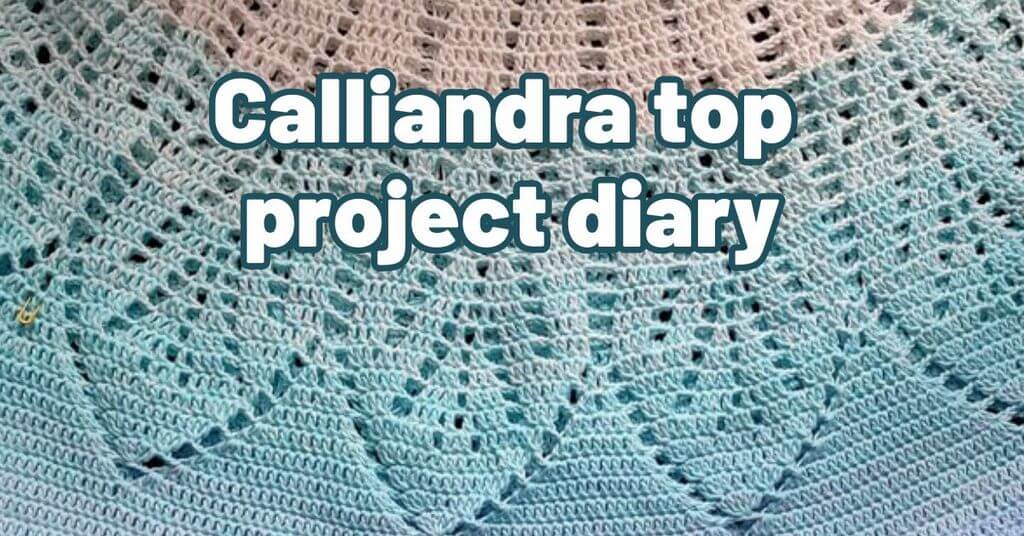
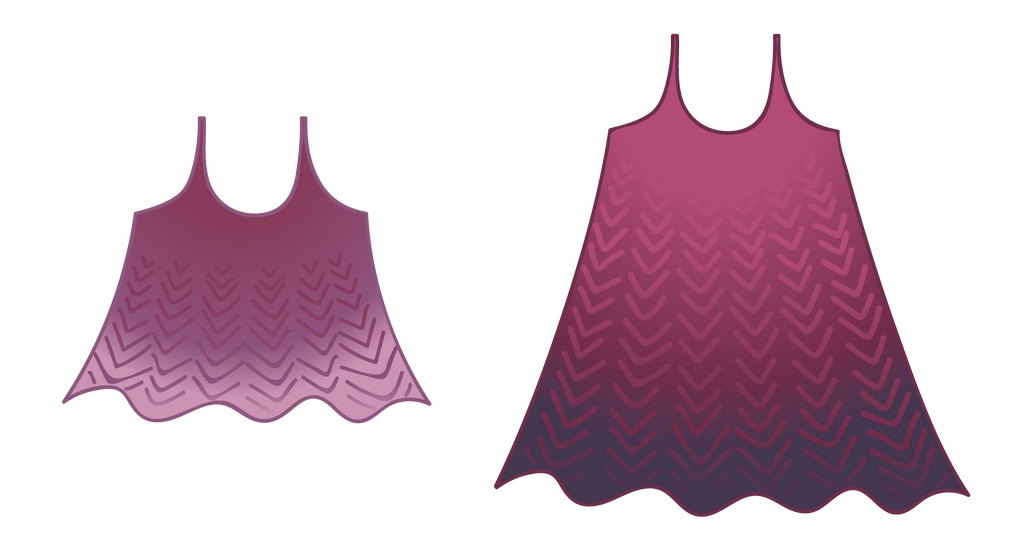
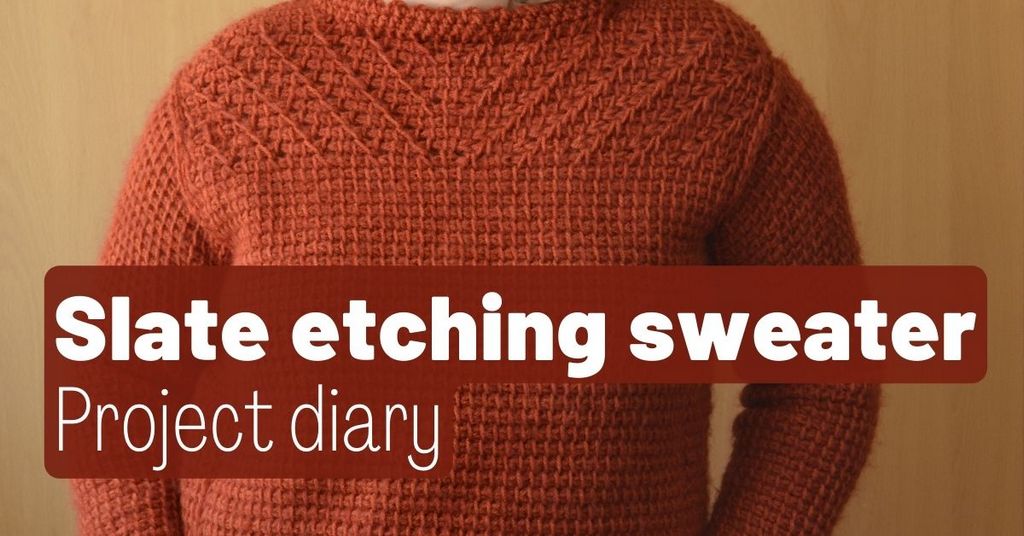
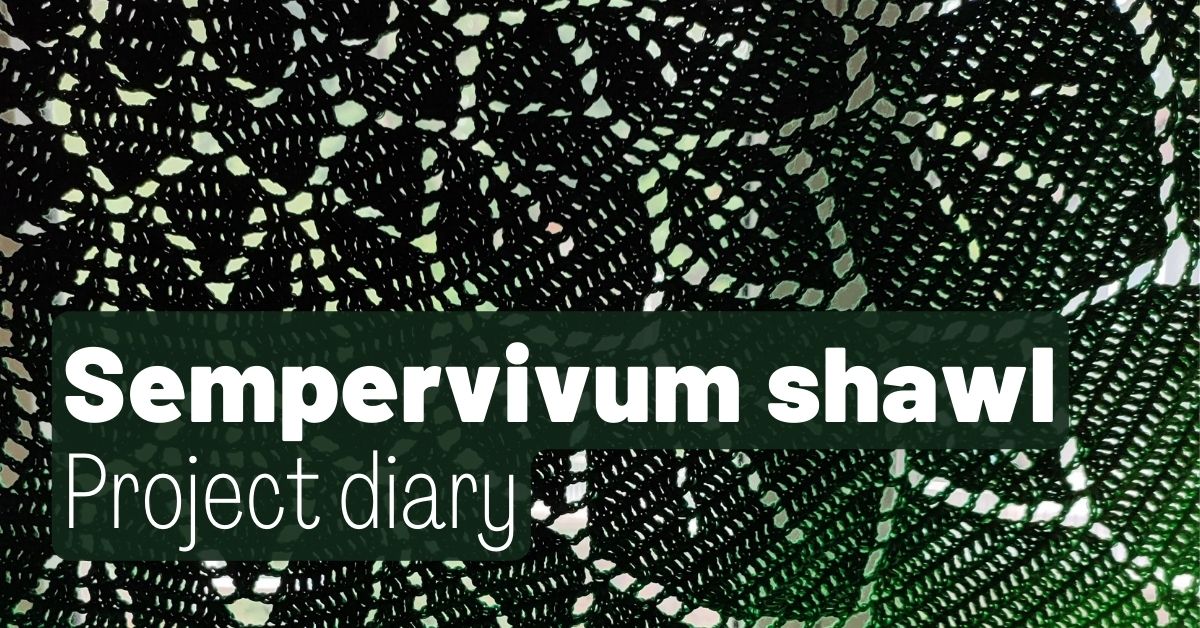

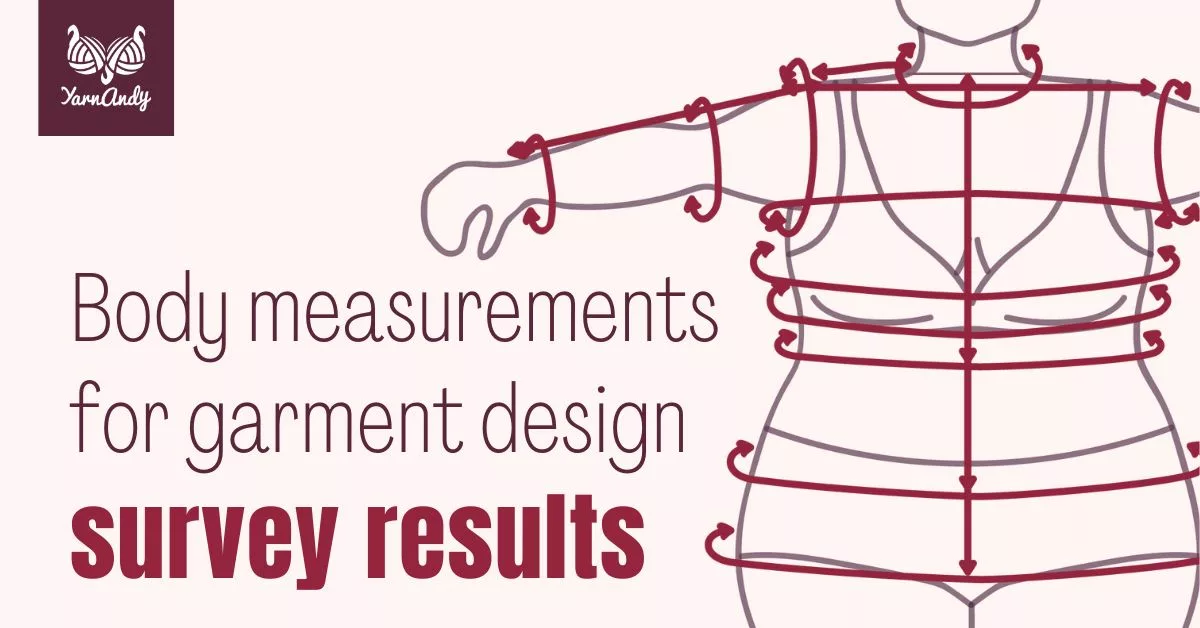
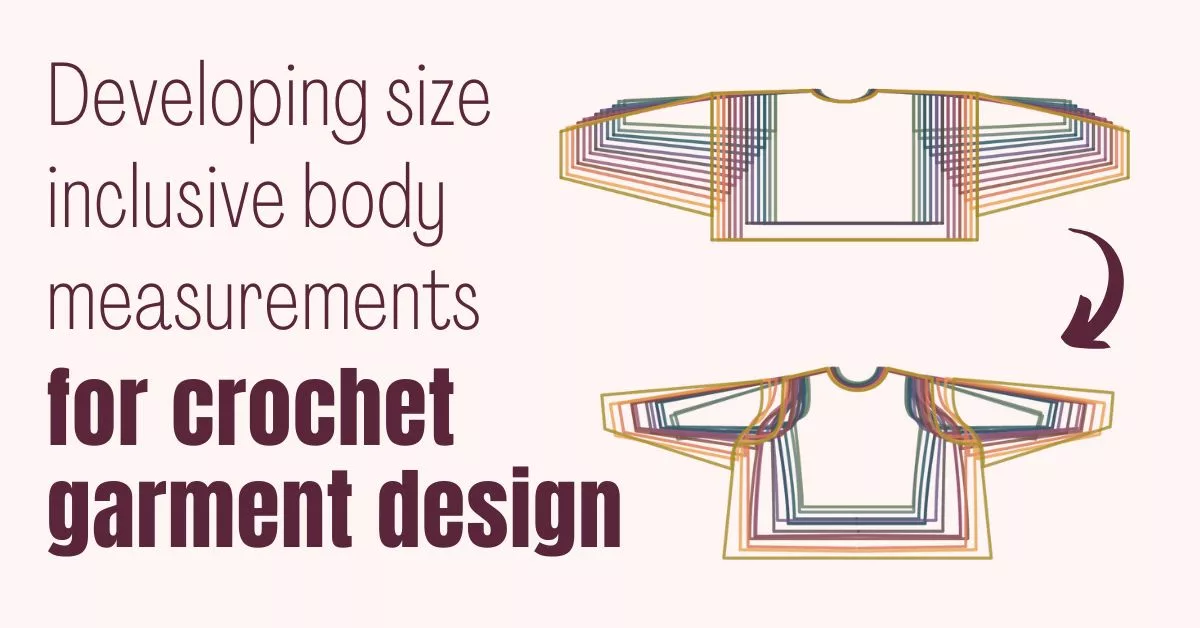
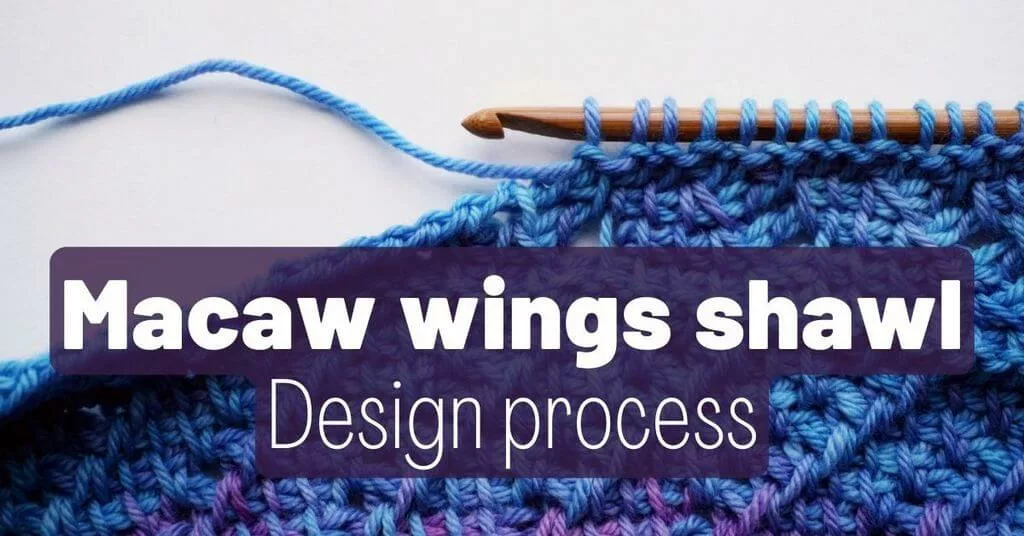

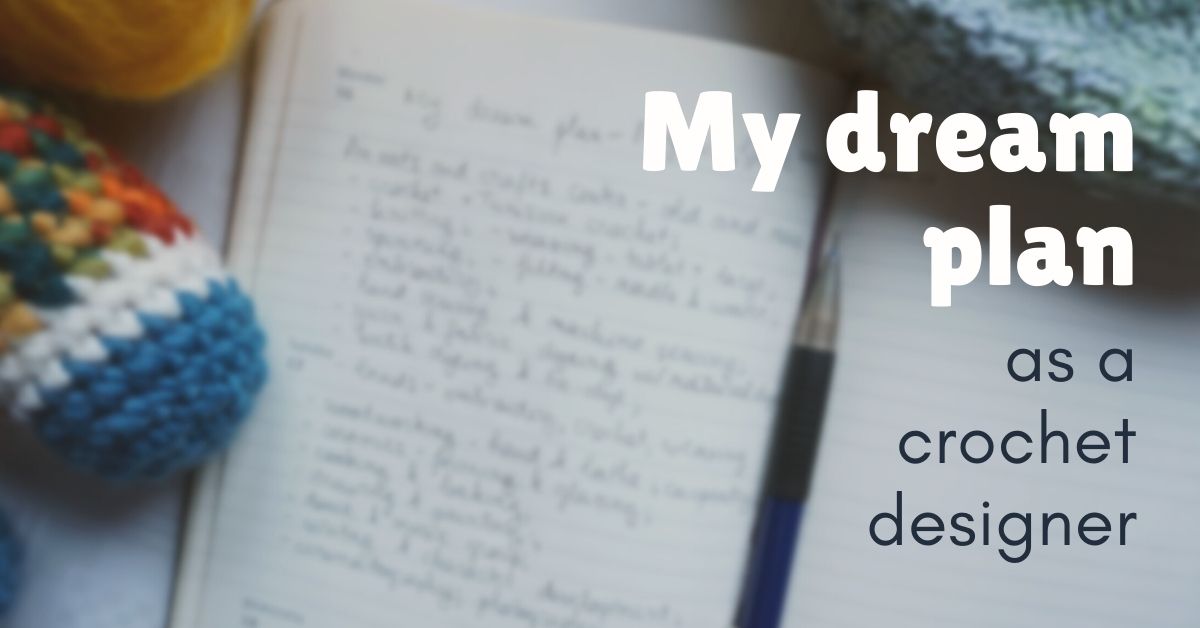
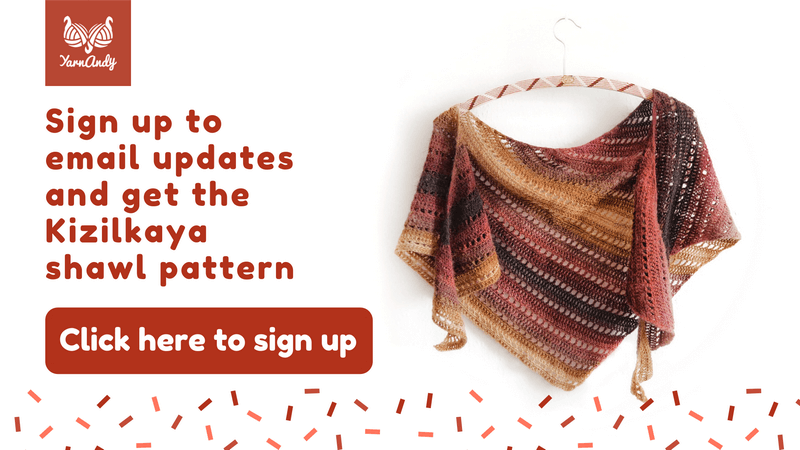
1 thought on “Why and how to find your niche as a crochet designer”